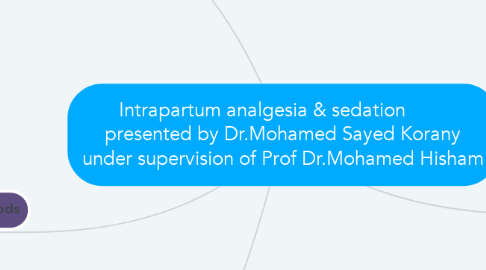Intrapartum analgesia & sedation presented by Dr.Mohamed Sayed Korany under supervision of Prof Dr.Mohamed Hisham
by Maoahmed Sayed


1. Indication woman request for labor pain relief is a sufficient indication for it's provision
2. Causes of pain
2.1. Uterine contractions&Cervical dilatation
2.2. Perineal stretching
3. Why Affect maternal and fetal well being
3.1. Hyperventilation -hypocarbia-may affect fetal acid-base balance
3.2. Greater metabolic rate - increased O2 consumption
3.3. Increased cardiac out put & vascular resistance - maternal blood pressure
3.4. Sympathetic nervous system response by increased catecholamines - affect uterine contractions and uteroplacental blood flow
4. Methods
4.1. parenteral agents
4.1.1. Meperidine (pethidine)
4.1.2. Butorphanol (Morphine)
4.1.2.1. Safety
4.1.3. Nalbuphine
4.1.4. Fentanyl
4.1.5. Remifentanyl
4.2. Regional analgesia
4.2.1. Pudendal nerve block
4.2.1.1. Technique
4.2.1.2. Complications
4.2.1.2.1. Toxicity
4.2.2. Paracervical block
4.2.3. Neuroaxial blocks
4.2.3.1. Epidural analgesia
4.2.3.1.1. Complications
4.2.3.1.2. Contraindications
4.2.3.1.3. Effect on labor
4.2.3.2. continuous spinal analgesia
4.2.3.3. Combined spinal Epidural analgesia
